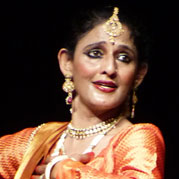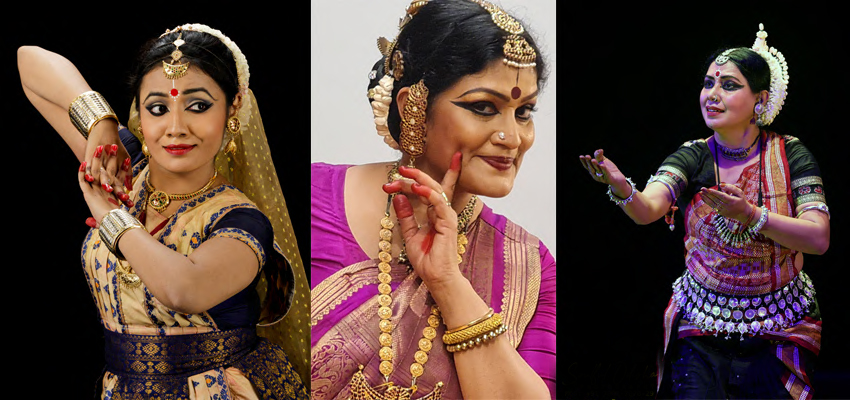As India celebrates its 70 years of Independence, the case of Indian Classical Dance exists in an environment of India’s global presence, the growth of a capitalist economy, vast influence of Social media, internet, and emphasis on packaging and designing dance performances and presentations for markets and audiences. The category of Indian Classical Dances reflects unique trends of performing arts in Transition. The article looks at the case of Odissi dance and reflects on a performance by the young Madhyma Segal.
The Cultural Geography of Odissi
Odissi emerges from an ancient cultural region of South Asia, one where a host of indigenous communities are the first citizens of the peninsula. While all creative traditions are in the constant process a tradition like Odissi dance evolves from the ecology of the ancient land of the Odera community it becomes a fascinating record of a weft and warp of threads of civilizational cultural representation and trends that are layered in rituals, sacred frames, and complex sociological and physical geographical landscapes.
The first half of the 20th century characterized by Cultural Nationalism impacted the manner intelligentsia reconfigured the status and aesthetics of a new category of performing art – ‘Classical Indian Dance’. So, although ancient, Odissi was gradually reworked with the interaction and study of several cultural traditions by intellectuals, male stakeholders who formed a group called. The male teachers and practitioner ‘The Gurus’ were in possession of transmission – ‘Together they worked for Odissi to be recognized as a Classical performing tradition only in the 1950s.
One of the main thrust of this Classical Status emerged from the manner the Body language and movement that were linked to the idea of the Sacred Feminine form aligned to Temple Structures. The second character which was intrinsic to the creation of Odissi as a Classical form emerged with a movement of legitimizing the tradition by the Gurus of Odissi who contributed to formalize content, and inner structural aesthetics.

Geometry, Feminine Body and Sacredness: In the creation of the sacred Feminine Body it was important for the Yagya (sacred ritual) to be represented in the human body and for that the structural stance of the body factored a square position called the Chowk, which was metaphorically balanced by the idea of feminine as energy and represented the stance of a Sacred lyrical position called Tribhang – Three Bend body. The Tribhang was directly aligned to the Sculptural representation of the Women in Performance on the Temples of Orissa (Devangana- Women with limbs of the God).
Like in other dance forms – Kathak, Bharatanatyam and others this new ‘Classical’ form was further made respectable with the entry of Middle-Class nontraditional women marginalizing traditional temple women performers – Maharis.
The Guru
Of the prominent Gurus that emerged in the making of Odissi, the role of Guru Mayadhar Raut is a fascinating example. He can be perceived as a pioneer who coordinated with the calling of intellectuals such as Mayadhar Mansingh and likes of Charles Fabri (a dance critic who wrote in the Statesman in the 1950s), he went to learn Bharatanatyam and Kathakali at the Kalakshetra and went onto enhance the repertoire and technique of the Odissi dance which amplified and heightened its status in the category of the ‘Classical’. He brought to Odissi technicalities associated with mimetic art or Abhinaya which was “further developed by the great Kelucharan Mahapatra” says well known Odissi exponent Kavita Dwivedi. Further, he worked on lyricism and developed the beautification of positioning the human body through the method of temple sculpture like freezes that asserted the image of the sacred.
Madhyama Segal
 She is the daughter and disciple of the renowned danseuse Kiran Segal. Kiran is a prime student of Mayadhar Raut and has devotedly followed his teaching. Madhyama, in turn, is gradually inching to the centre of the stage. Her recent performance came as a whiff of fresh breath. No designed packaging, but one glimpsed a complete immersion in deliberating her journey on the stage, her dance reasserted the grace, the freezes and the balanced bol or chain of rhythmic patterns that interspersed her presentation.
She is the daughter and disciple of the renowned danseuse Kiran Segal. Kiran is a prime student of Mayadhar Raut and has devotedly followed his teaching. Madhyama, in turn, is gradually inching to the centre of the stage. Her recent performance came as a whiff of fresh breath. No designed packaging, but one glimpsed a complete immersion in deliberating her journey on the stage, her dance reasserted the grace, the freezes and the balanced bol or chain of rhythmic patterns that interspersed her presentation.
However, the main attributes of her talent were illustrated as she was able to depict the seminal or emotional thread of varied characters with ease and clarity. The rendering of a young girl within the pace of a few minutes got transcended in the portrayal of the majestic Shiva in the famous choreographed piece by Mayadhar Raut – Jago Maheshwar.
The Fast Pace- Dilemmas and Assertion
The pressure of a fast-moving, digital and sparkling world on dancers has impacted Classical Dance traditions. For example, Odissi which like Kathak, Bharatnatyam and most other Classical Genres is majorly a Solo form has been reduced to large group presentation. Hence, the rendition of solo performances or even duet performers is more than often pushed to capture audience short attention span by the use of accessories such as a fast pace of dancing and acrobatic feats.
Impact on Odissi
The pressure of fast pace cannot but distort the seminal identity of a dance form like Odissi whose anchor is a lyrical passage which ends in freezes. As Dr. Kapila Vastyayan writes in her book Indian Classical Dance that “Odissi’s use of a deflected hip and unequal weight on bent legs varies from the straighter positions typical of other types of Indian dance”, it is this position which ensures that the pace of the dance is medium or slow. However, when the rhythm is increased, the dancer can only keep pace by straightening the body, distorting the main identity of both the formation of the square position- Chowk and the Thribhang (three-bend lyrical stance) created by the deflected hip. This has what has happened with Odissi dancers taking to performing in fast rhythms to induce excitement in the audiences succumbing in turn to the pressure of the environment.
However, the challenge is to negotiate and create a new path and challenge the environment on its own term so that the fundamental structural identity of the Odissi dance is sustained and maintained. The performance of the young Madhyama Segal appeared to be doing just that, and what a relief that someone young is choosing to take up the mantle to stand to assert the identity for which the beauty of Odissi is famed and a character that asserts the essence of lyrical yet empowered feminism.










